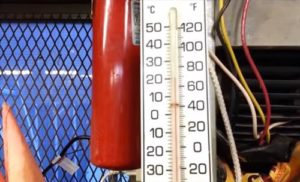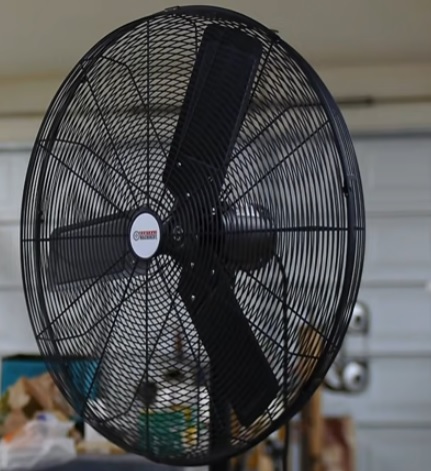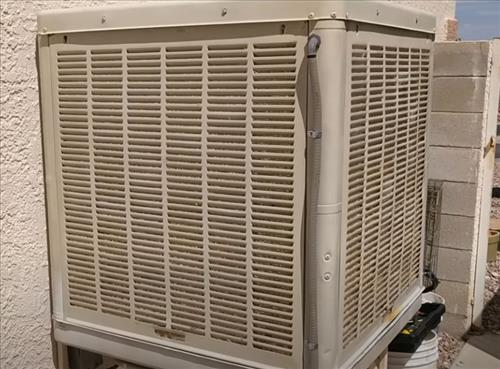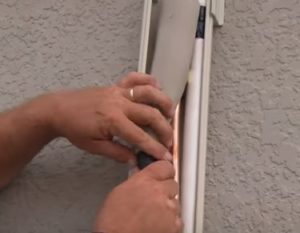
Garages can become unbearably hot in the summer, especially in certain climates.
If you are stuck working in a hot garage cooling, it down can be done using one of three popular methods.
Finding a way to cool down a garage is on everyone’s mind when they are working in it.
Since cooling the garage is never a priority when a home is built, it is left to the homeowner to find a solution.
So let’s break down popular cooling options to keep things bearable.
3 of the Best Ways To Cool a Garage
- Fans
- Evaporative Swamp Cooler
- Mini Split Air Conditioning

Fans can be a good option, and some have the added benefit of venting the garage.
Depending on the activity, venting can be important; for example, working on a car would need to be vented if it is running.
If you do need to vent the space, other options will work when the exhaust fan is not on, with the exception of evaporative coolers.
Fans can be a good way to move air keeping a space cool, at least in moderate climates.

Depending on the climate you live in, evaporative coolers, often called swamp coolers, can work very well.
They only work in low humidity dry climates and don’t work in highly humid environments.
If you do live in a dry climate, such as the American South West, they can be ideal for cooling a garage.
They also have the added benefit of venting air since they pull air from the outside and cool it as it passes into a building.
Swamp coolers come in all shapes and sizes, from small and portable to full-sized fixed units.
They also are much cheaper to run than a standard air conditioning unit since they only use a large fan with a small water pump to do all the cooling.
Air conditioning units are great since they will work in any climate, and heat pump units can even supply heat in the winter.
The downside is they are the more expensive option along with higher running costs.
If you do go with an air conditioner, using what is called a Mini Split air conditioner is the best option for a garage.
Mini split units are small ductless air conditioners ideal for garage use.
They do require more extensive installation than a fan or swamp cooler and require running a line-set from the outdoor condensing unit to the inside unit, which transfers heat through the refrigerant lines.

While most that go this route hire an HVAC installer, there are DIY kits in which an entire unit can be bought and set up by someone with basic construction skills.
Summary
In the past, staying cool in the summer was considered a luxury, but now with the many options available, staying cool is within anyone’s reach.
The climate you are located in will have a huge impact on the type of system needed.
Dry, hot climates can easily use a swamp cooler unit, while those in a humid climate will need an air conditioner or at least a fan.
Whichever method is selected, be sure to read the reviews on Amazon or elsewhere to be sure a unit is a good fit for you.